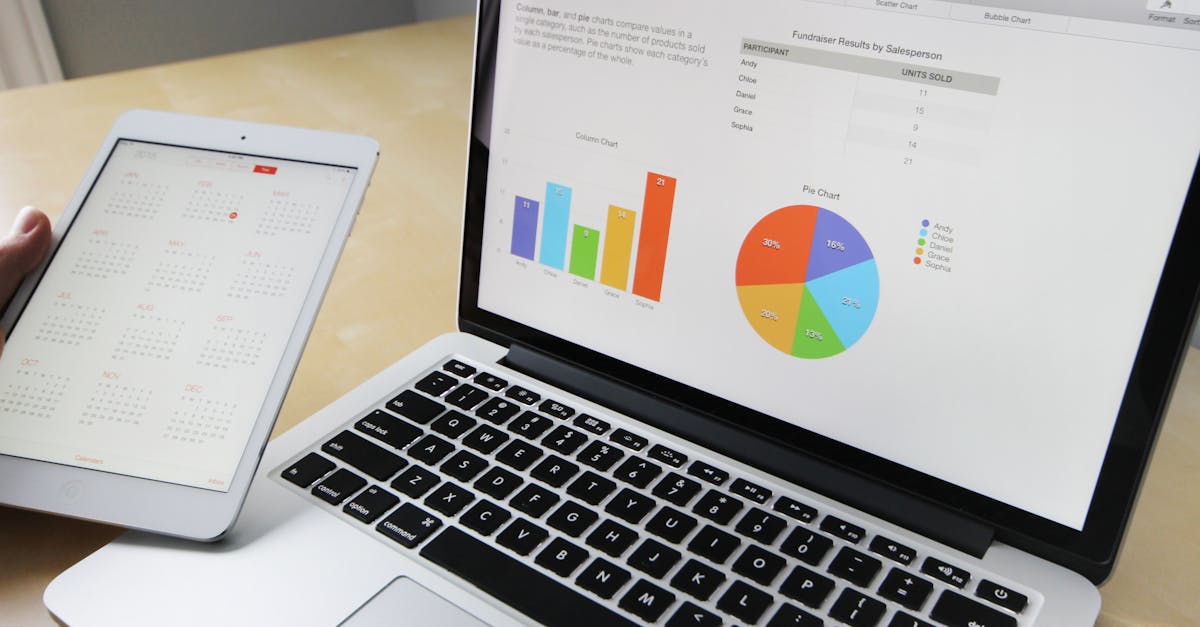
Table Of Contents
Best Practices for Data Analysis
Data analysis is a pivotal component in deriving actionable insights from data sets. In the realm of Analytics and Reporting Keysborough, Melbourne, adopting best practices is essential for ensuring accuracy and reliability in the interpretation of data. One key practice involves defining clear objectives before diving into the analysis process. Setting specific and measurable goals helps in guiding the analysis and ensuring that the insights generated are aligned with the intended outcomes. Additionally, it is crucial to validate the quality of data sources to prevent errors that could skew the analysis results. Data cleaning and preprocessing are fundamental steps in streamlining the data for accurate analysis.
Moreover, maintaining transparency throughout the data analysis process is another best practice that enhances the credibility of the insights generated. Documenting the steps taken, assumptions made, and methodologies applied allows for reproducibility and fosters trust in the analysis outcomes. Collaborating with team members or stakeholders during the analysis phase can also provide valuable perspectives and refine the analysis approach. Embracing a systematic and structured approach to data analysis not only ensures the reliability of the insights but also facilitates informed decision-making based on data-driven evidence.
Ensuring Accuracy and Reliability in Data Interpretation
To ensure accuracy and reliability in data interpretation, thorough data verification processes must be followed. This includes checking for any anomalies or inconsistencies in the data set, as well as verifying the reliability of the data sources. Proper documentation of data cleaning and preprocessing steps is essential to maintain transparency and traceability in the analytical process. Analytics and Reporting Melbourne recommends implementing systematic validation techniques to confirm the correctness of the data and reduce the risk of errors in the analysis.
Moreover, data interpretation should involve rigorous testing of assumptions and methodologies used in the analysis. Sensitivity analysis can help assess the impact of different assumptions on the results, while cross-validation techniques can validate the model's performance across different datasets. It is crucial to communicate any limitations or uncertainties in the data analysis process to ensure the integrity of the findings presented in the reports. By adhering to these best practices, data analysts can enhance the accuracy and reliability of their interpretations, leading to more informed decision-making processes.
Data Visualization in Reporting
Data visualization in reporting plays a crucial role in conveying insights effectively to a diverse audience. Through the strategic use of graphs, charts, and other visual aids, complex data sets can be simplified and presented in a more digestible format. In the realm of Analytics and Reporting Keysborough, Melbourne, incorporating data visualization techniques not only enhances the overall aesthetic appeal of the reports but also helps in highlighting key trends and patterns for easier interpretation.
Visual representation in reporting goes beyond merely presenting data - it has the power to uncover hidden correlations and relationships that might not be immediately apparent in raw data. By leveraging tools such as interactive dashboards and infographics, data analysts can create dynamic reports that engage stakeholders and facilitate better decision-making processes. Within the context of Analytics and Reporting Keysborough, Melbourne, mastering the art of data visualization is essential for amplifying the impact of data analysis and ensuring that insights are communicated clearly and effectively.
Enhancing Reports with Visual Representation
Enhancing reports with visual representation is a pivotal aspect of data analysis and reporting. Visual aids such as charts, graphs, and infographics can help communicate complex data in a clear and concise manner. These visuals not only make the information more accessible to a broader audience but also enhance the overall impact of the report. Analytics and Reporting Keysborough, Melbourne professionals often leverage various tools and software to create visually appealing representations of data that can highlight key insights and trends.
By incorporating visual elements into reports, data analysts can effectively convey their findings and conclusions to stakeholders. Visual representations not only make the data easier to understand but also facilitate quicker decision-making processes. Moreover, visual aids can help identify patterns, correlations, and outliers that may not be as apparent when solely using textual data. Analytics and Reporting Keysborough, Melbourne experts understand the importance of visual storytelling in data reporting and strive to provide compelling visualizations that support their analyses and recommendations.
Role of Data Analysts in Reporting
Data analysts play a crucial role in transforming raw data into meaningful insights for organizations. In Analytics and Reporting Keysborough, Melbourne, data analysts are responsible for collecting, organizing, and interpreting data to provide valuable information to decision-makers. They utilize various analytical tools and techniques to uncover trends, patterns, and correlations within data sets, enabling businesses to make informed choices based on evidence rather than intuition.
Moreover, data analysts in Analytics and Reporting Keysborough, Melbourne, are tasked with creating comprehensive reports that communicate complex data findings in a clear and concise manner. By presenting data in easily digestible formats, such as tables, charts, and graphs, analysts help stakeholders understand the significance of the information and its implications for the business. Their role is essential in driving strategic decision-making processes and driving overall performance improvement within organizations.
Responsibilities of Data Professionals in Delivering Insights
Data professionals play a crucial role in delivering valuable insights through data analysis and reporting. Their responsibilities involve collecting, organizing, and analyzing data to uncover trends, patterns, and correlations that can guide decision-making processes. In Analytics and Reporting Melbourne, data professionals are expected to possess strong analytical skills, attention to detail, and the ability to communicate complex findings in a clear and concise manner.
Moreover, data professionals are tasked with ensuring the accuracy and reliability of the insights they provide. This involves verifying the quality of data sources, conducting thorough analyses using appropriate methodologies, and regularly reviewing and refining reporting processes to enhance the overall quality of insights. In Analytics and Reporting Melbourne, a high level of integrity and professionalism is paramount when delivering accurate and reliable data insights to support informed business decisions.
FAQS
What is data analysis?
Data analysis is the process of examining, cleaning, transforming, and modeling data to discover useful information, draw conclusions, and support decision-making.
What is data reporting?
Data reporting involves presenting the findings from data analysis in a structured format, such as charts, graphs, tables, or written reports, to communicate insights and trends effectively.
Why is data analysis important?
Data analysis is crucial for organizations to make informed decisions, identify patterns and trends, optimize processes, and gain a competitive edge in their industry.
How can data analysis ensure accuracy and reliability?
Ensuring accuracy and reliability in data analysis involves validating data sources, using appropriate statistical methods, cross-checking results, and maintaining data integrity throughout the process.
What role do data analysts play in reporting?
Data analysts play a key role in data reporting by analyzing data, generating insights, creating visualizations, and presenting findings in a clear and actionable manner to stakeholders.
How can data visualization enhance reporting?
Data visualization involves representing data visually through charts, graphs, and interactive dashboards to simplify complex information, identify patterns, and communicate insights more effectively in reports.
What are the responsibilities of data professionals in delivering insights?
Data professionals are responsible for collecting, analyzing, interpreting, and presenting data in a meaningful way to stakeholders, enabling informed decision-making and driving business growth.


